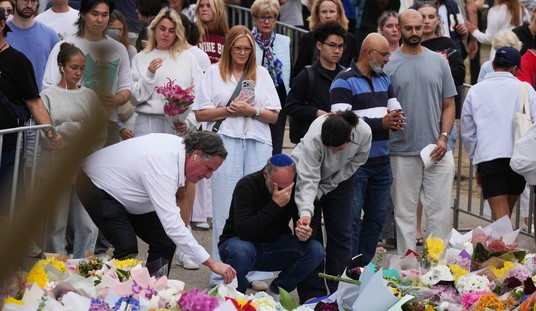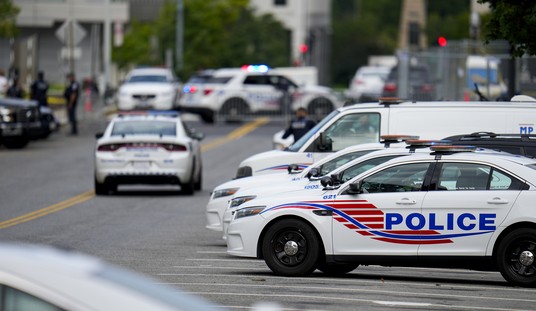I swear that I wrote the following Tweet hours before seeing George Takei’s missive on gun control at the always (accidentally) amusing The Daily Beast.
I'm amused that the people who know the least about firearms seem to think they have the best ideas on how they should be used.
— Bob Owens (@bob_owens) June 14, 2016
I’ve always liked Mr. Takei as an actor, and am generally impressed by his eloquence. He’s a wonderful speaker. His thinking, however sometimes leaves much to be desired. That’s never been more evident than in his attempt to argue for widespread gun control, artificially pitting the First Amendment freedom of assembly and association against the natural right to armed self-defense.
Mr. Takei assumes much based on faulty readings, and misfires in his enterprise.
With our most basic freedoms under direct assault, it becomes both fair and imperative for us to ask, “What will be done to safeguard our right to associate and assemble?” Just as a fundamental right to vote can be stripped away by even the threat of violence, so too can a whole community grow silent out of fear. Such is the power of terrorism.
The answer to this question ought to be both resounding and clear, but it quickly grows muddled because another freedom—the right to bear arms—is implicated. That is to say, the asserted right of citizens to own, purchase, and sell semi-automatic firearms runs headlong into our right to participate in civil society without undue fear of being targeted or killed. We appear to face a choice, because one freedom seemingly cannot be protected without limiting the other.
But this is not so rare a circumstance. Indeed, there is no freedom within the Bill of Rights that is absolute. Even freedom of speech, a bedrock of our participatory democracy, has some established limits. I may not jokingly yell “fire” inside a crowded theater, precisely because the value of that speech is heavily outweighed by the danger to others who might panic. Nor may I cavalierly libel others without fear of legal repercussions. This is because we have decided, as a society, that the cost of the injuries that might arise outweighs any benefit from the freedom to say whatever I want.
We already do this with firearms, too. For example, private citizens cannot buy, sell, or possess machine guns, for the simple reason that their potential for great harm outweighs any possible rationale for owning them. Our Supreme Court already has set the outer boundary of limitations on gun ownership by protecting the right to own a handgun in the home. But beyond that, the rest lies undetermined. Somewhere between a protective home handgun and a machine gun-toting terrorist lies the harder question of what to do about the rest, such as the semi-automatic weapons of choice used by recent mass killers.
Let’s teleport back to reality for a moment.
American citizens can lawfully buy, sell, and possess machine guns. There’s actually a brisk market for it, and Americans have been able buy, sell own, and fire machine guns as long as they have been in existence. There are machine guns shoots public and private around the country, with perhaps the best two known ones being Knob Creek In West Point, Kentucky (shown below), and Big Sandy in Arizona.
Thanks to gang warfare in the late 1920s and early 1930s, the National Firearms Act of 1934 imposed a $200 tax on machine guns, but the Democrat Congress and President Roosevelt were well aware of the fact that they clearly lack the Constitutional authority to ban military weapons.
Currently, there are 175,997 transferable machine guns in the United States that can be purchased by law-abiding citizens. You can browse for many of them online. You can also buy tanks, armored personal carriers, and even ballistic missiles. Jacques Littlefield, for example, amassed a wonderful collection.
The Founding Fathers were quite adamant that citizens always have access to military weapons, because the American people are now, and have always been the militia. Founding Father Tench Coxe perhaps put it best in the Pennsylvania Gazette on Feb. 20, 1788.
Congress have no power to disarm the militia. Their swords, and every other terrible implement of the soldier, are the birthright of an American… The unlimited power of the sword is not in the hands of either the federal or state governments, but, where I trust in God it will ever remain, in the hands of the people.”
The Founding Fathers and citizens of their time could own hand grenades, rockets, cannons, mortars, auto-cannon, early machine guns (such as the Belton superposed General George Washington wanted to buy mid-Revolutionary War; the Continental Congress passed based upon cost to buy more muskets to equip more men), volley guns, pivot guns, and private warships carrying tons of all of these weapons, and more than capable of sacking coastal cities.
When they wrote “shall not be infringed” Mr. Takei, they meant it, just as when they wrote “well-regulated” they clearly meant it in the 18th century context which meant “in proper working order.” They wanted the American people—the militia—well-armed and well-trained against the threat of tyrannical government, a threat American citizens fought as recently as the McMinn County War in 1946. Who knows, sir… if Americans had been more resistant to Democrat urges towards tyranny and bigotry earlier on, you might not have spent so many years in internment camps.
Sadly, that’s history, but we can learn from the mistakes of the past, which forces me to torpedo your next false assumption as well.
Assuming the threat we face now comprises heavily-armed, homegrown religious fanatics bent on inflicting massive casualties, the logical solution is to render them less armed and less fanatical. Restricting their ability to obtain dangerous weapons domestically thus is as vital as diminishing and destroying their bases and influence overseas. Would-be terrorists cannot so much as board a plane without a thorough screening, yet we give them nearly unfettered access to very dangerous weapons. Arguments that we will never stop all shootings by restricting access to such weapons fails to account for our strong and common desire at least to stop many of them—or any of them.
Curiously, you start of by saying “less armed and less fanatical,” but as committed progressives so often do, you then let let radical Islam off the proverbial hook. Indeed, the only time you directly mention it is to note early on that the “right” holds radical Islam responsible.
You instead hold firearms responsible, as if swords were responsible for the Crusades (which, by the way, were triggered by violent Islamic attacks against peaceful peoples. Some things never change). Your assumptions about restricting guns are factually incorrect as well.
I nearly laughed at your naivete when I read this.
In 2004, a 10-year ban on assault weapons ended due to a sunset provision in the law. America has since lacked the political will to renew the ban, perhaps because victims of mass shootings don’t tend to have friends in Congress, even when they are innocent school children.
You’re sadly off course, sir.
The 1994-2004 “ban” was an entirely political illusion. It banned gun names, sir, so gun names were changed and the same firearm was on the market the next day. The TEC-9, specifically named as a banned firearm, was mocking renamed the AB-10 (“after ban”) and was back on the market before the law even took effect. Other named guns were similarly renamed and remarketed.
Other firearms were declared “assault weapons” if they had a number of certain cosmetic features, none of which affected the accuracy, power, range, or rate of fire of the gun.
Here’s a perfect example.

Can you tell me which of these AR-15 variants was banned from 1994-2004 under President Clinton’s “assault weapon” ban?
I’m sorry… that’s actually a bit of a Kobayashi Maru.
The Ar-15 on the top sold very well and was quite legal throughout the ten year life of this imaginary “ban.” It shot just as far, just as accurately, and just as fast as the version on the bottom that was sold both before and after the ban. It simply had three insignificant cosmetic differences that only a trained eye would easily pick up.
Put bluntly, the “assault weapon” ban was a farce, sir, as are you misinformed opinions, based upon a very poor understanding of how this Republic is supposed to work.
We both want to protect innocent lives.
I hope you can be educated to understand that make the weak weaker has never protected them at any point in human history. Only by giving people the ability to defend themselves against savages can people be free.
In regards to the gay community’s right of self defense, Pink Pistols is light-years ahead of you.
“Thirty-one states allow all qualified citizens to carry concealed weapons. In those states, homosexuals should embark on organized efforts to become comfortable with guns, learn to use them safely and carry them. They should set up Pink Pistols task forces, sponsor shooting courses and help homosexuals get licensed to carry. And they should do it in a way that gets as much publicity as possible.”
When it comes down to it, Mr. Takei, your view of the problem and your imagined solution are both warped.
Take off the red (hair) shirt, and try putting on a pink one.








Join the conversation as a VIP Member